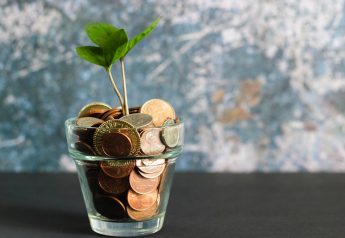Blockchain technology is influencing many layers of the economy. Cryptocurrencies enable instant and cross-border transactions, while blockchain databases are already helping companies in supply chain logistics and identity management. But what does that mean for end-users, and how will blockchain shape the future of consumerism?
The 2019 trends for retail markets suggest the growing impact of Generation Y, aka Millennials, born between 1982 and 1996. They are the largest adult age group right now (and ever), and they are shaping the market in unexpected ways.
Millennials have been shaped by the financial crisis of 2008 and the rise of social media. They don’t trust financial institutions or governments but share intimate details with their peers and tech giants. Due to unfavorable job markets and massive student debts, they experienced the lowest average income since the great depression, so they prefer experiences and shared-economy to merely buying things.
Blockchain, which was created smack in the middle of the financial crisis (1st Nov 2008), fits rather perfectly with those alternative consumers.
Here are a few examples of how blockchain can shape the future of consumerism.
1. Traceability (and fairtrade)
With the growing demand for product sustainability and socially conscious brands, consumers like being able to check their products’ provenance.
Blockchain allows us to track items from manufacturers to end-users. It enables consumers, but also companies and the supply chain participants to:
- check how their products have been sourced or produced (Fairfood, Fairchain),
- optimize the recycling of products’ components for a circular economy (Circularize),
- limit the counterfeit products in the chain, especially highly-sensitive items like medicine or building materials.
2. Transparency
Public open blockchains offer anyone in the world access to blockchain data from their laptops or smartphones. In theory, we could track and check our products and food at any time by simply scanning a QR code in a shop or communicating with the smart tracking devices, tags, and other transport management gadgets (IoT).
Many companies and enterprises utilize private blockchains to track their products and communicate with other companies. But, following consumer trends, brands are increasing their transparency to build trust, and that includes letting customers see precisely where their smartphones, clothes, and avocados are coming from.
3. No Banks = Lower Cost, Faster Transactions
Blockchain is a cross-border, peer-2-peer system than allows you to purchase products, buy tokenized assets, earn free tokens and make trusted contracts directly, without third parties like banks, notaries, lawyers, and financial institutions.
For the end-users, it means lower fees, quicker transfers when sending money abroad. For big consortia, using cryptocurrencies could mean saving millions of dollars by:
- Avoiding traditional currency-exchange rates;
- Lowering transaction fees;
- Excluding lawyers and notary fees;
- Reducing opportunity costs by speeding up all settlements.
For now, companies look to lower their costs and increase margins, but eventually, the discounts will reach the end-consumers as companies compete for the chunk of the market.
4. Faster e-commerce
As brick and mortar shops become less popular, many businesses are moving online. But with 2-day shipping standards introduced by Amazon Prime, consumers are getting restless if their delivery takes longer than 4,5 days.
Blockchain can dramatically improve companies reconciliation process and with it, the speed of their deliveries.
Reconciliation is a process where different companies agree on a single version of truth. Imagine a package is sent from company A to company C through delivery company B. Each of the companies will have a different data management system, so how will they know when the package arrived?
The companies will have to reach a consensus that the package arrived or didn’t arrive. For example, company A has a record that it sent a package. Company B has a record that the package was delivered. But Company C might not have received anything. Reconciliation is the process of finding out where the package is right now. Using Blockchain technology (sometimes coupled with smart devices), companies can quickly check the delivery status on the open blockchain ledger without needing to trust each other’s systems or exchange information to and fro looking for the lost package.
Summary
Blockchain fits perfectly with the current consumer profile. It offers a technological solution to build trust in consumer brands by increasing the transparency of their supply chain, tracing the sustainable products directly from their source, lowering transaction costs, and speeding up e-commerce deliveries.
Popular destinations
- Best Casinos Not On Gamstop 2025
- Non Gamstop Casinos UK
- Siti Casino Online Non Aams
- Casinos Not On Gamstop
- UK Betting Sites
- Non Gamstop Casinos
- UK Online Casinos Not On Gamstop
- Best Non Gamstop Casinos UK
- Best Non Gamstop Casinos
- Casino En Ligne Fiable
- UK Casino Not On Gamstop
- Online Casino
- Meilleur Casino En Ligne
- Non Gamstop Casino Sites UK
- Sites Not On Gamstop
- Best Non Gamstop Casinos
- Migliore Casino Non Aams
- Best Non Gamstop Casinos
- Casino En Ligne Fiable
- Non Gamstop Casinos UK
- Sports Betting Sites UK
- Betting Sites Not On Gamstop
- Best Horse Racing Betting Sites
- Lista Casino Online Non Aams
- Non Gamstop Casino UK
- Crypto Casinos
- Meilleur Casino Belgique En Ligne
